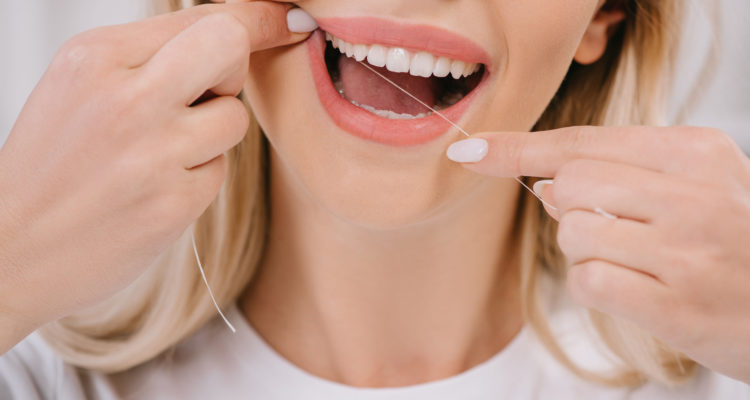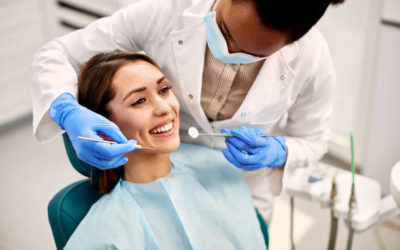
Top 5 tips from a dental hygienist for a healthy smile
There's a lot more to good oral health than white, straight teeth. It's about overall health, and it starts with practicing good habits every day. A dental hygienist may surprise you with simple but effective tips for maintaining a bright smile and avoiding oral disease. These health professionals are trained to provide practical advice on oral hygiene, and here we share five of the best tips they'd recommend.
What are the basics of good oral hygiene?
Oral hygiene is the first line of defense against various tooth and gum diseases. This includes regular brushing and flossing, as well as following up with your regular dental practice for professional cleanings.
By brushing your teeth at least twice a day, you remove the plaque responsible for problems such as gingivitis. Adopting this routine significantly reduces the risk of developing serious oral diseases such as periodontitis. For many dental hygienists, these daily gestures represent a solid foundation in the prevention of oral health-related diseases.
Why consult a dental hygienist on a regular basis?
Even if you have an excellent routine at home, there's no substitute for professional care. Regular visits to the dental hygienist can detect potential problems before they become serious. Professional cleaning can remove tartar that brushing alone cannot.
It's also essential to have the advice of a trained professional to spot early signs of oral disease or conditions requiring further medical attention. By visiting a dental office every six months or so, you can maximize your chances of maintaining a healthy mouth.
What role does prevention play in dental care?
Prevention is a crucial aspect of dental care. Dental hygienists place great emphasis on controlling risk factors to prevent disease, rather than treating it once it has set in. With preventive measures such as dental groove sealing and fluorides, the development of cavities can be significantly reduced.
Certain habits can also have a positive influence on your oral health, such as limiting sugar consumption, not smoking, and ensuring a balanced diet rich in vitamins and minerals. In fact, prevention is as much about what you do on a daily basis as it is about targeted professional interventions.
What are the main tips for effective brushing?
Brushing your teeth correctly requires a certain technique. In addition to frequency, you need to pay attention to duration and method. Here are some recommendations from dental hygienists to optimize your routine:
- Use a soft-bristled brush, adapted to the size of your mouth, to reach all tooth surfaces easily.
- Take two full minutes to brush, dividing the time equally between all areas of the mouth.
- Tilt the brush at a 45-degree angle towards the gum line and make small circular movements.
Don't forget to replace your toothbrush every three months, or as soon as the bristles start to fray. Using the right fluoride-containing toothpaste also helps to strengthen teeth while offering extra protection against cavities.
How can you prevent gum disease?
Gum disease such as gingivitis and periodontitis is often caused by an untreated build-up of hardened plaque (tartar). Regular visits to the dental hygienist for scaling are essential. Develop a daily habit of flossing to clean interdental spaces where the brush doesn't fit.
It's a good idea to keep an eye out for indicators such as bleeding gums, discoloration or tooth sensitivity. If symptoms appear, it's important to consult a specialist as soon as possible to obtain a proper diagnosis.

Dental floss: your indispensable ally
Often underestimated, dental floss plays an undeniable role in oral hygiene. Its main function is to remove food particles trapped between teeth, where the brush has difficult access. It also effectively combats plaque, helping to prevent gum inflammation and tooth decay.
For many, flossing can seem tedious. However, regular use will quickly show beneficial results on gum health, encouraging its continued use. Although it may take some time to become a habit, persevere!
What's the best way to floss?
Flossing is not that complicated. Here are a few steps to follow:
- Cut a piece of dental floss about 40 centimetres long.
- Gently wrap the thread around your fingers, leaving enough length to work with.
- Insert gently between each interdental space without forcing to avoid traumatizing the gums.
- Bend the wire slightly around the tooth and move it slowly up and down.
It's crucial to clean all the gaps, including the teeth at the back of your mouth. With patience, this will help keep your gums healthy.
Oral hygiene FAQs
Which foods are best for dental health?
A balanced diet is good for dental health. Include calcium-rich foods such as dairy products, and crunchy fruits and vegetables that naturally stimulate salivation. Limit acidic and sweet foods to prevent cavities.
What's the difference between gingivitis and periodontitis?
Gingivitis is an inflammation of the gums often caused by inadequate oral hygiene, reversible by a better hygiene routine. Periodontitis is more serious, affecting the tissues that support the teeth, and can lead to tooth loss if left untreated.
How often should I change my toothbrush?
A toothbrush should be replaced every three months, or when you notice that the bristles are worn and less effective. Also, remember to change it after you've had an illness such as a cold or flu to avoid further contamination.
Is it necessary to use a mouthwash?
Using a mouthwash can complement your oral hygiene routine by reaching areas where brushing and flossing may fail. Choose an alcohol-free product enriched with antibacterial ingredients to fight plaque and freshen breath. However, it does not replace brushing or flossing.
Discover also the Centre Dentaire Lancy and the Centre Dentaire Champel





